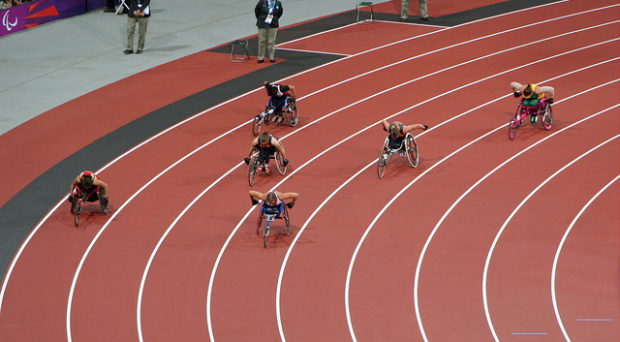
Paralympic sport provides sporting opportunities for athletes with disabilities, with the Paralympic Games as the main event. In a few days the Paralympic Games in Rio de Janeiro, Brazil, begin. The Games are expected to be one of the largest in history and athletes with physical, visual or intellectual impairments will accomplish sporting excellence that in many ways is similar to elite performances in able-bodied athletes.
Participation in sport is of great importance, especially for persons with disabilities, as they often have lower physical fitness compared to non-disabled individuals. Participation in sport is, however, associated with a risk of sustaining injuries and illnesses that may have long-lasting consequences for the individual.
In our clinical work with athletes we often see them being injured, ill or overloaded during training or competition. Being injured when you already have an existing impairment, sometimes even acquired from sports, can be particularly challenging for the athletes. They may already have complex pre-existing medical conditions, such as neurodegenerative disorders, spinal cord injury, amputations, vision loss and intellectual impairments, and a sports-related injury or illness may further influence them in their sports performance as well as in their daily life.
Being injured when you already have an existing impairment…can be particularly challenging for the athletes.
Athlete monitoring over time has been implemented within several sports for able-bodied athletes, but such studies are scarce within Paralympic sport.
Also, there are injury prevention programs based on observational studies for a wide range of sports. However, our knowledge of sports-related injuries and illnesses in Paralympic sport is limited and there are no evidence-based prevention programs.
Recently, we published a study protocol in BMC Sports Science, Medicine and Rehabilitation where we present an upcoming prospective longitudinal study specifically tailored to Paralympic sport. To capture all sports-related injuries and illnesses in Paralympic sport and to obtain valid data, we believe there is a need for a self-report injury/illness surveillance system specifically tailored to Paralympic athletes with different impairments.
In this project, the athletes will be asked to weekly report sports-related injuries and illnesses, pain, anxiety, training load and exposure. This is the first study where Paralympic athletes themselves report their injuries and illnesses over a long period.
The project – The Sports-Related Injuries and Illnesses in Paralympic Sport Study (SRIIPSS) – is expected to lead to a unique understanding of sports-related injuries and illnesses in Paralympic Sport. In the long-term, this will facilitate the identification and development of specific evidence-based injury/illness prevention strategies adapted to Paralympic sport.
The project is pursued in direct dialogue with athletes, coaches and stakeholders, and is a collaborative effort between scientists at Lund and Linköping University, Sweden. Ultimately, the clinical relevance of this study is to allow safe sport participation and to maximize athletic performance in Paralympic sport. Thereby, we hope that the project will be of relevance for Paralympic athletes at all levels and to the Paralympic Movement.
For someone who already has a disability to still participate in sports is really commendable. But, this is not something sports injury doctors would recommend because of the high risk of getting worst disabilities especially for sports that require too much physical work.